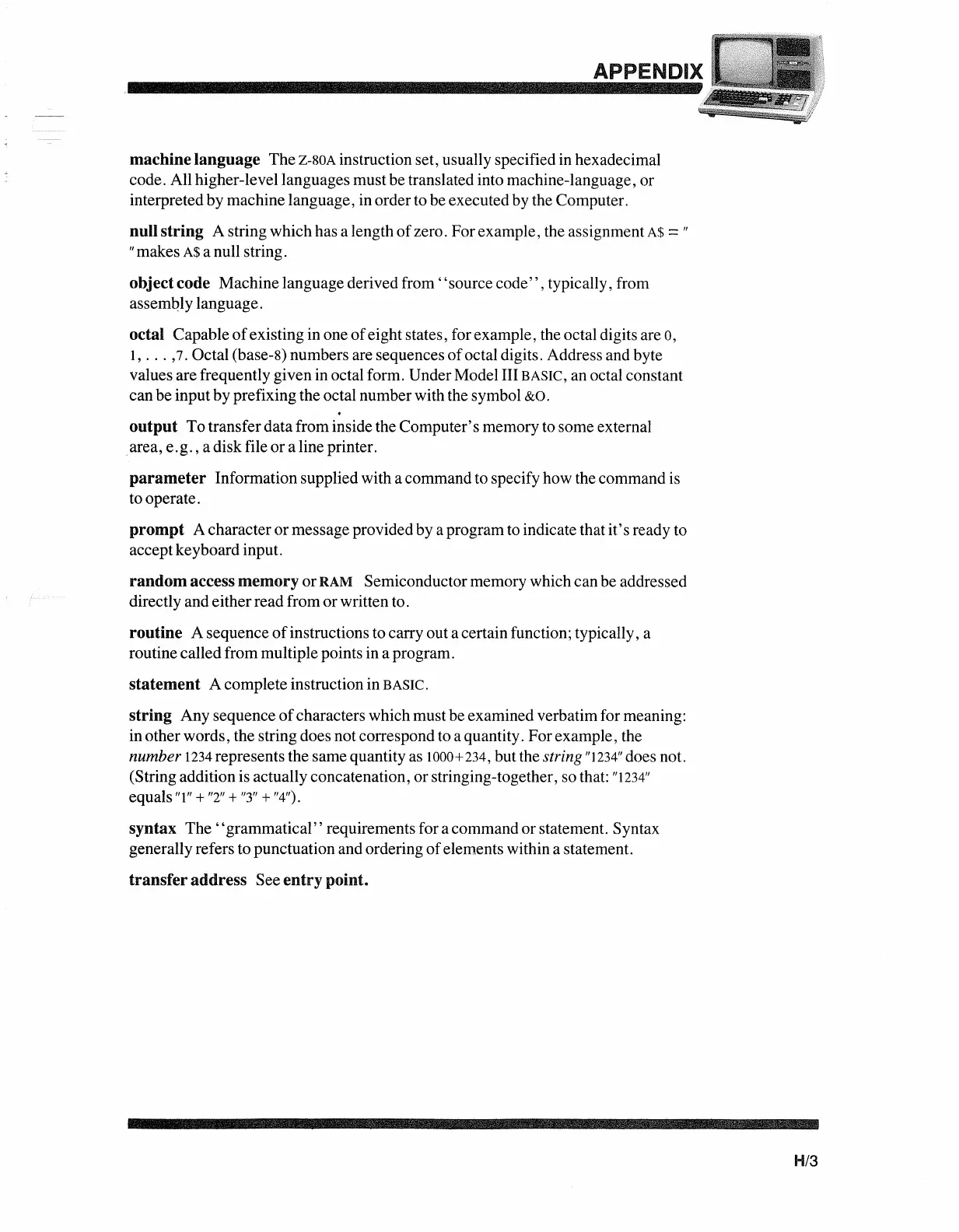APPENDIX
machine language
The
Z-80A
instruction set, usually specified in hexadecimal
code. All higher-level languages must be translated into machine-language,
or
interpreted
by
machine language, in orderto beexecuted by the Computer.
null string A string which has a length
of
zero. Forexample, the assignment
A$
="
"makes
A$
a null string.
objectcode Machine language derived
from'
'source code" , typically, from
assembly language.
octal Capable
of
existing in one
of
eightstates, for example, the octal digits are
0,
1,
...
,7. Octal (base-8) numbers are sequences
of
octal digits. Address and byte
values are frequently given in octal form. Under Model III
BASIC,
an octal constant
canbe input
by
prefixing the octal number with the symbol
&0.
output
To
transferdata from inside the Computer's memory to some external
area,
e.g.,
a diskfile
or
a line printer.
parameter Information supplied with a command to specify how the command is
to operate.
prompt A character
or
message provided by a program to indicate that
it's
ready to
acceptkeyboard input.
random access memory
or
RAM
Semiconductormemory which can be addressed
directly and eitherread from
or
written to.
routine A sequence
of
instructions to carry out a certain function; typically, a
routine calledfrom multiple points in a program.
statement A complete instruction in
BASIC.
string Any sequence
of
characters which must be examined verbatim for meaning:
inother words, the string does not correspond to a quantity. Forexample, the
number
1234
represents the same quantity as
1000+234,
but the string
"1234"
does not.
(String addition is actually concatenation,
or
stringing-together, so that:
"1234"
equals "I" +
"2"
+
"3"
+
"4").
syntax
The"
grammatical" requirements for a command
or
statement. Syntax
generally refers to punctuation and ordering
of
elements within a statement.
transferaddress See entry point.
H/3

